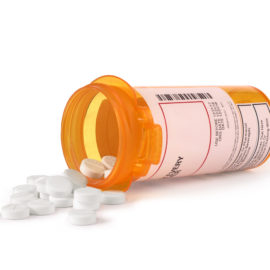If you need rehab for substance use disorder or alcohol use disorder, the first and most fundamental decision you’ll face involves a choice between inpatient vs. outpatient treatment. In this guide to inpatient vs outpatient treatment, we’ll address issues that include:
- What is inpatient and outpatient rehab?
- Inpatient rehab vs outpatient rehab differences.
- How to connect with inpatient or outpatient rehab in California.
What Is Inpatient vs Outpatient Rehab?
Before you start interviewing treatment centers to find the best fit, you need to be clear about the different levels of addiction service available on the continuum of care and the difference between inpatient and outpatient treatment.
Rehab can be divided into two methods of delivery:
- Inpatient rehab
- Outpatient rehab
Inpatient rehab
Inpatient treatment is also known as residential rehab. Most inpatient programs last from 30 to 90 days. You remain in the treatment center from detox to discharge.
The length of your stay in an inpatient facility will depend on the following variables:
- Type of substance use disorder
- Severity of substance use disorder
- Any co-occurring mental health disorders
- Whether or not you have previously engaged with addiction treatment
The first thing you’ll do after intake and an initial assessment is to kickstart the detoxification process. With medical detox, you’ll have help on hand in the event of complications that develop. Also, FDA-approved medications can help reduce the intensity of both withdrawal symptoms and cravings. With your body free of substances and toxins, you’ll be ready for treatment proper.
Individual counseling sessions allow you to dive deep into the specifics of your addiction, working closely one-to-one with a qualified counselor. With group counseling, you’ll be exposed to a wide range of input during sessions, and you can also benefit from the peer support of others undergoing broadly similar experiences.
Medication-assisted treatment can be delivered on an ongoing basis throughout this phase of your recovery.
You’ll also have access to talk therapies like CBT (cognitive behavioral therapy) or DBT (dialectical behavior therapy). With this form of therapy, you’ll gain a better understanding of your triggers for substance abuse. You’ll also learn to formulate superior coping strategies to implement when stressed in the real world. Most of the best inpatient rehabs also offer holistic therapies and adventure therapy to supplement traditional evidence-based therapies.
Expect your days in inpatient rehab to be rigidly structured. You’ll also have balanced, nutritious meals provided, and you’ll be encouraged to stay hydrated and to exercise within your limits.
If you have a severe substance use disorder, residential rehab will typically provide you with the most favorable treatment outcome. You’ll enjoy around-the-clock support and supervision from the challenging detox and withdrawal stage right on throughout your stay in residential rehab.
Residential rehab also works well if you have an unsupportive home environment not conducive to your recovery. Being removed from bad influences and from temptation can give you the added strength to avoid relapse.
Not everyone needs inpatient treatment for substance use disorder, though, and not everyone can afford it.
Fortunately, outpatient treatment is also highly effective, with studies showing that intensive outpatient programs are just as effective for treating most substance use disorders as inpatient rehab.
Outpatient rehab
If you have a mild or moderate substance use disorder or alcohol use disorder, you may find outpatient treatment makes a smooth fit.
This modality is not suitable for everyone, though. You’ll need a suitable and supportive home environment to get the most out of outpatient treatment. You will also need to be highly motivated and fully committed to recovery.
With outpatient rehab, there’s no need to pack your bags and head to a treatment center. Instead, you’ll attend scheduled sessions on weekdays, and you’ll return home after each session.
While this form of delivery means you don’t get the same support and structure as you get in residential rehab, you can maintain a semblance of normality, and you’ll also find outpatient treatment is much more affordable.
Outpatient treatment falls into three main types:
- Traditional outpatient program: With a regular outpatient program, you’ll attend a few short sessions each week.
- IOP (intensive outpatient program): IOPs offer you a minimum of 9 hours of weekly treatment.
- PHP (partial hospitalization program): A PHP is a full-time program involving 30 or so contact hours, although you will remain at home for the duration of the program.
You can engage with continuing care in an outpatient capacity as you proceed with your recovery, including attending 12-step support programs.
Whatever the time commitment of an outpatient program, you can expect access to the same sort of services and therapies you get in inpatient treatment, but at a fraction of the cost.
Which form of treatment works best for addiction treatment, then?
What Is the Main Difference in Inpatient vs Outpatient Rehab?
The primary difference between inpatient and outpatient rehab lies in the intensity and structure of the treatment programs, as well as the living arrangements during the recovery process.
Inpatient rehab
Inpatient rehab is characterized by:
- 24-hour care: Patients have access to round-the-clock medical and emotional support. This constant availability of care is particularly beneficial for those with severe addiction issues or co-occurring mental health disorders.
- Structured environment: Inpatient rehab provides a highly structured environment, free from the distractions and triggers of everyday life. This structure is essential for those who need a stable and controlled setting to focus solely on recovery.
- Intensive treatment: These programs typically offer a more intensive treatment schedule, including individual and group therapy, educational sessions, and possibly holistic therapies, depending on the facility.
- Duration: The length of stay in inpatient rehab can vary, typically ranging from 30 to 90 days, depending on individual needs and progress.
Outpatient rehab
Key aspects of outpatient rehab include:
- Flexibility: Outpatient programs are generally more flexible, allowing individuals to maintain their daily responsibilities, such as work or school, while receiving treatment.
- Scheduled treatment sessions: Treatment involves scheduled sessions for counseling, therapy, and education, which may take place several times a week. The frequency and duration of these sessions can be adjusted based on the individual’s progress and commitments.
- Support systems: This type of rehab encourages the use of existing support systems, such as family and friends, as part of the recovery process.
- Variety of intensities: Outpatient programs can vary in intensity, with some offering more comprehensive and time-intensive treatment comparable to inpatient programs, known as IOPs (intensive outpatient programs).
Both inpatient and outpatient rehabs are effective in addressing addiction and recovery, with the choice largely depending on the individual’s specific circumstances, severity of addiction, and personal commitments.
Inpatient Vs Outpatient Rehab Success Rates
In evaluating the success rates of inpatient versus outpatient rehab, the journey of recovery should be viewed a phased process, where the transition from inpatient to outpatient treatment often yields the highest success rates. Inpatient rehab, with its immersive and structured environment, provides a strong foundation for recovery, especially for individuals with severe addiction or those requiring detoxification and medical supervision. The intensive care, away from the stresses and triggers of daily life, allows for a focused approach to understanding and addressing the root causes of addiction.
Following a successful inpatient treatment, transitioning to an outpatient program can be highly effective in reinforcing the lessons and coping strategies learned during the inpatient phase. Outpatient rehab offers a more flexible approach, allowing individuals to gradually reintegrate into their daily lives while still receiving the support and guidance necessary for maintaining sobriety. This phase is crucial for applying the skills learned in a real-world context, with the safety net of professional support.
This combined approach capitalizes on the strengths of both inpatient and outpatient settings. Initially, the inpatient program provides a safe, controlled environment for detox and stabilization, while the subsequent outpatient care supports long-term recovery by promoting independence, accountability, and the practical application of newly acquired skills in everyday life. This continuity of care is key to preventing relapse and ensuring a sustainable recovery, as it allows for a gradual transition and ongoing support, adapting to the individual’s evolving needs as they progress through their recovery journey.
How Do I Know Whether I Need Inpatient vs Outpatient Rehab?
Deciding whether inpatient or outpatient rehab is the right choice depends on several individual factors and the specific circumstances surrounding your addiction and personal life. Understanding these factors can guide you in making an informed decision.
The intensity of your addiction plays a crucial role in determining the appropriate level of care. Inpatient rehab is often recommended for those with severe addiction or a long history of substance abuse, where the environment is controlled and distractions are minimized. This setting is particularly beneficial for individuals who need medical detox or have co-occurring mental health disorders. The immersive nature of inpatient rehab provides comprehensive care and support, essential for addressing complex addiction issues.
Your daily responsibilities can influence the type of rehab that is feasible for you. If you have commitments that cannot be put on hold, such as work, school, or family obligations, outpatient rehab may be more suitable. It allows you to live at home and maintain your regular schedule while attending treatment sessions. This option requires a stable and supportive home environment and a high level of commitment to recovery.
If your home environment is conducive to recovery and free from triggers, outpatient rehab can be effective. However, if you’re in an environment that exposes you to stressors or triggers for substance use, inpatient rehab can provide a safe and supportive space away from those influences.
The cost of treatment and your insurance coverage can also influence your decision. Inpatient rehab tends to be more expensive due to the intensity of care and accommodation provided. It’s important to review your insurance coverage and financial situation to determine what is feasible for you.
Finally, your readiness and commitment to the recovery process play a significant role. Inpatient rehab requires a full-time commitment, with a focus entirely on recovery. If you feel prepared to dedicate this time and effort, it may be the right choice. Conversely, if you’re looking for a treatment option that balances your recovery with other life commitments, outpatient rehab might be more appropriate.
FAQs
What is the difference between inpatient and outpatient rehab?
Inpatient rehab involves a person staying at a rehab center for continuous care and supervision, usually for severe addiction or mental health issues. Outpatient rehab, on the other hand, enables people to live at home while attending scheduled treatment sessions, offering more flexibility and independence.
What is considered outpatient treatment?
Outpatient treatment refers to medical services or therapies that are provided to people who do not require an overnight stay at the facility. This type of treatment includes regular appointments for counseling, therapy, medication management, and other medical services, suitable for those who can manage their condition without 24-hour supervision.
What does inpatient mean?
Inpatient refers to a type of medical care when individuals are admitted to a hospital or specialized facility like a rehab center and stay overnight or for an extended period. This approach is typically for more serious conditions that require close monitoring, intensive therapy, or complex medical procedures that cannot be performed on an outpatient basis.
Get Effective Addiction Treatment at Gratitude Lodge’s Rehab
If you feel that you would benefit from the structured, immersive nature of inpatient rehab, begin your recovery with residential rehab at Gratitude Lodge in California. We have pet-friendly and inclusive rehabs conveniently located in Long Beach and Newport Beach, CA. Here, you can engage with science-backed addiction treatment in an environment free of triggers and distractions.
Begin your inpatient treatment program with supervised detoxification, streamlining the withdrawal process and reducing the chance of complications or relapse disrupting early recovery. After a week or so, you’ll move to ongoing inpatient treatment at one of our beachside facilities.
All Gratitude Lodge inpatient addiction treatment programs offer access to the following interventions:
- Talk therapies
- Motivational therapies
- Holistic therapies
- MAT (medication-assisted treatment)
- Group and individual counseling
- Family therapy
- Aftercare planning
When you are ready to tackle drug addiction or alcohol addiction head on, call 800-994-2184.




























